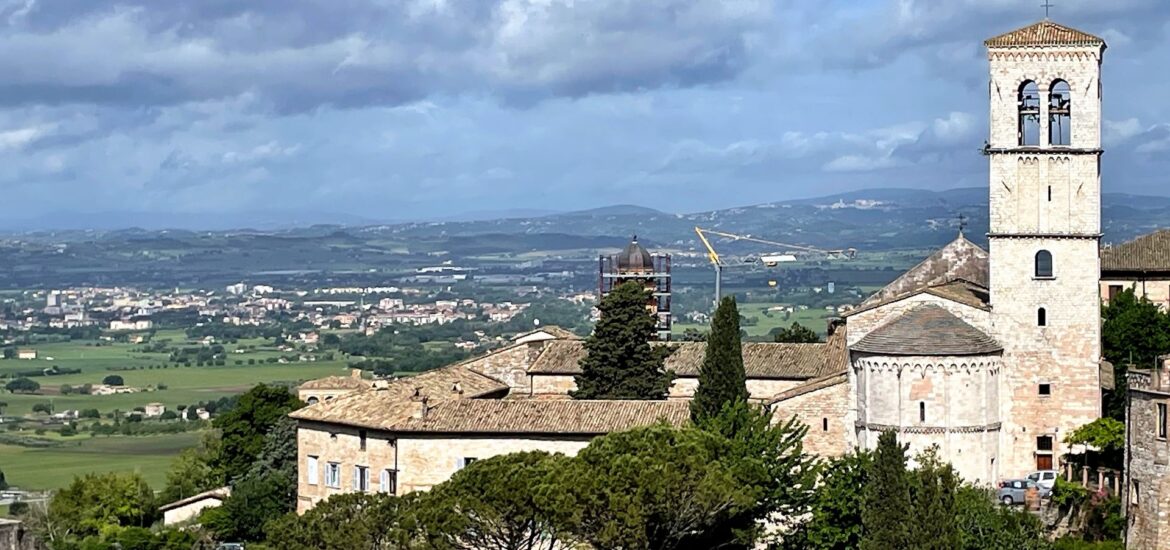Umbria, Italy’s green heart, is the only Italian region that borders neither the sea nor another country. That is the reason why many Italian traditions survive even today. Umbria is especially famous for its food and wine culture.
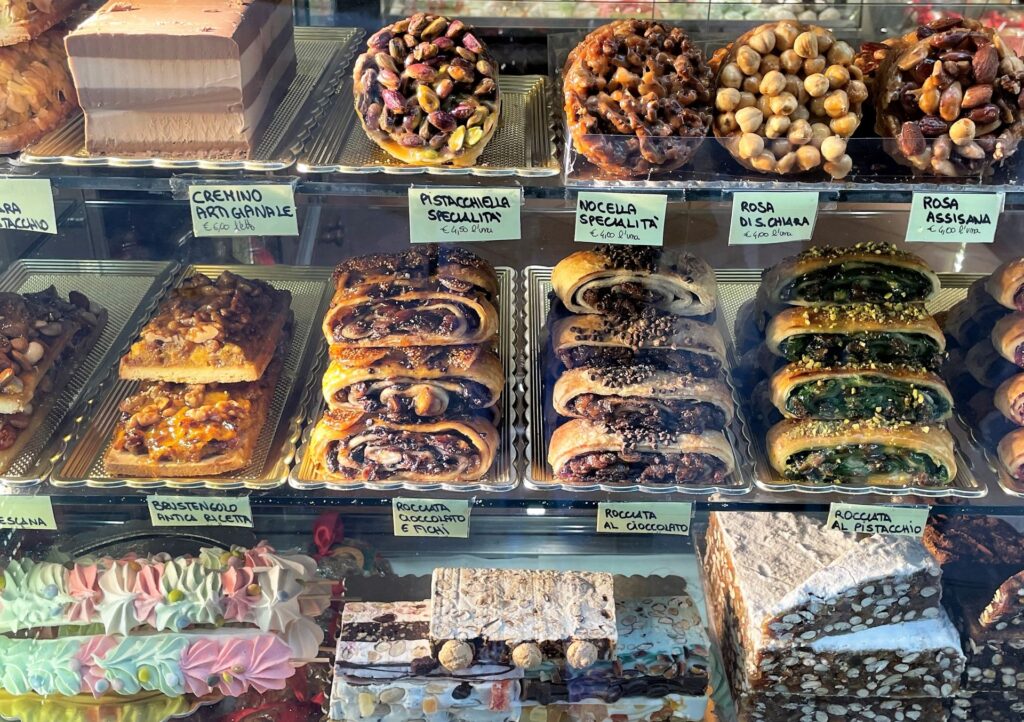
We visited Umbria in May, escaping the tourist crowds, and we really enjoyed exploring its amazing, authentic towns and villages. It is interesting to mention that many settlements in this part of Italy are situated on the top of a hill; the streets, alleys and stairs are often rather steep and narrow, and most of them are car-free. However, the authorities found a good solution: there are plenty of parking lots and in many places there are escalators leading to the „centro storico“.
Although we have spent just a few days in Umbria, I would like to describe 3 places I found particularly impressive. They are all part of the St. Francis’ Way or „La Via di San Francesco“, a new pilgrimage route that follows the travels of St. Francis of Assisi, the patron saint for ecologists.
ASSISI
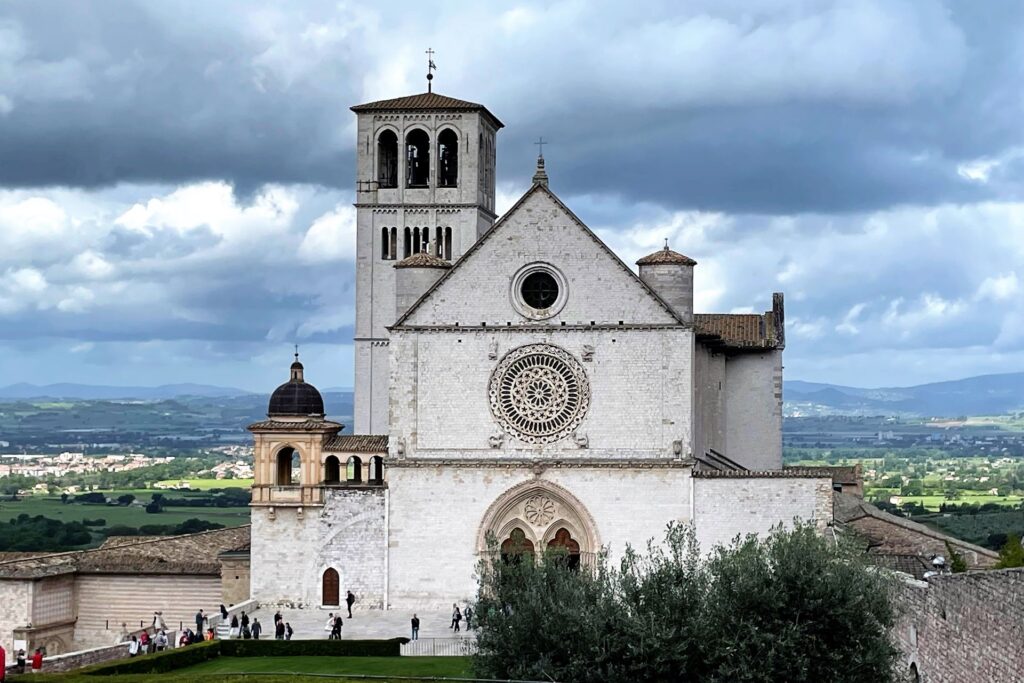
Assisi was the first town in Umbria we visited, after having traveled by ferry from Split to Ancona. As it is the birthplace of St. Francis (1181), it is well-known as a pilgrimage site, drawing visitors from around the world (4-5 million annually).
But who was St. Francis of Assisi? Francesco was the son of a wealthy merchant. He was renowned for drinking and partying in his youth, but his life changed after a year of imprisonment in Perugia in 1202. That is where he fell seriously ill and reportedly began receiving visions from God. He renounced his worldly goods, embraced a life of poverty and founded the Franciscan Order. One day in 1224 he received a vision that left him with the stigmata of Christ – marks resembling the wounds Jesus Christ suffered when he was crucified (some people believe that the wounds were actually symptoms of leprosy). He died in 1226.
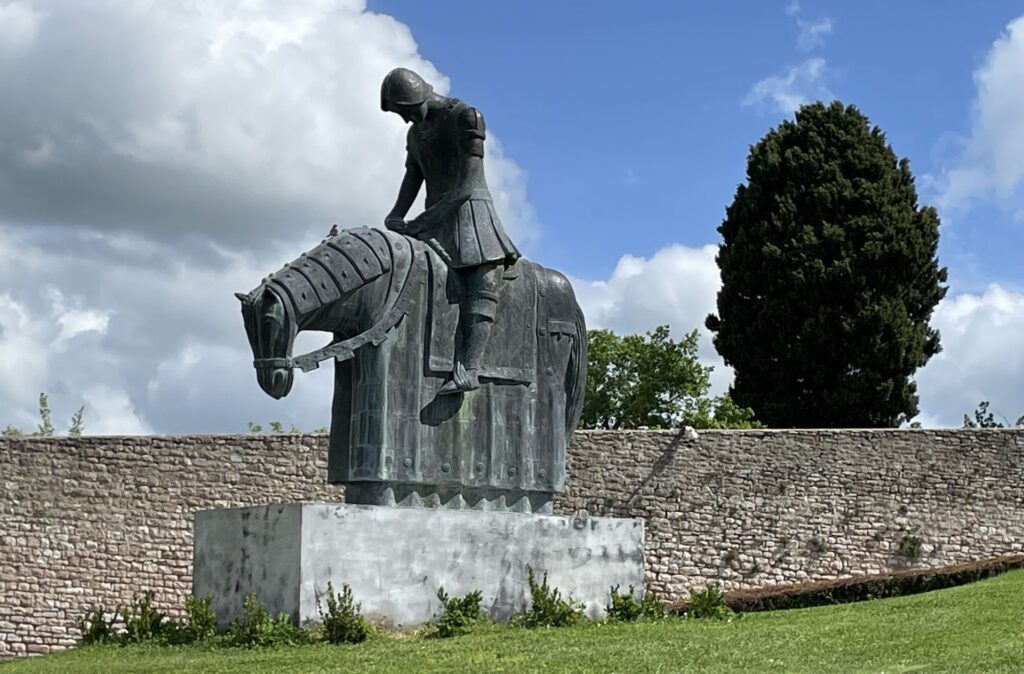
The weather was rather variable when we arrived, but it was a pleasure to explore the narrow cobblestoned streets and the numerous churches. There was a long list of historical and religious sites to visit, so we had to make a choice.
Of course, visiting the Basilica di San Francesco D’Assisi was a „must“. The construction of the basilica started in 1228, just two days after St. Francis was declared a saint. It is divided into the upper church and the lower church. The upper church, a Gothic cathedral, is covered with 28 frescoes by Giotto that depict St. Francis’ life. The lower sanctuary is a much smaller Romanesque church with the tomb of St. Francis. The basilica was listed as a UNESCO World Heritage Site in 2000. Such a pity that photography is not allowed inside of the basilica, as both churches were full of wonderful frescoes!
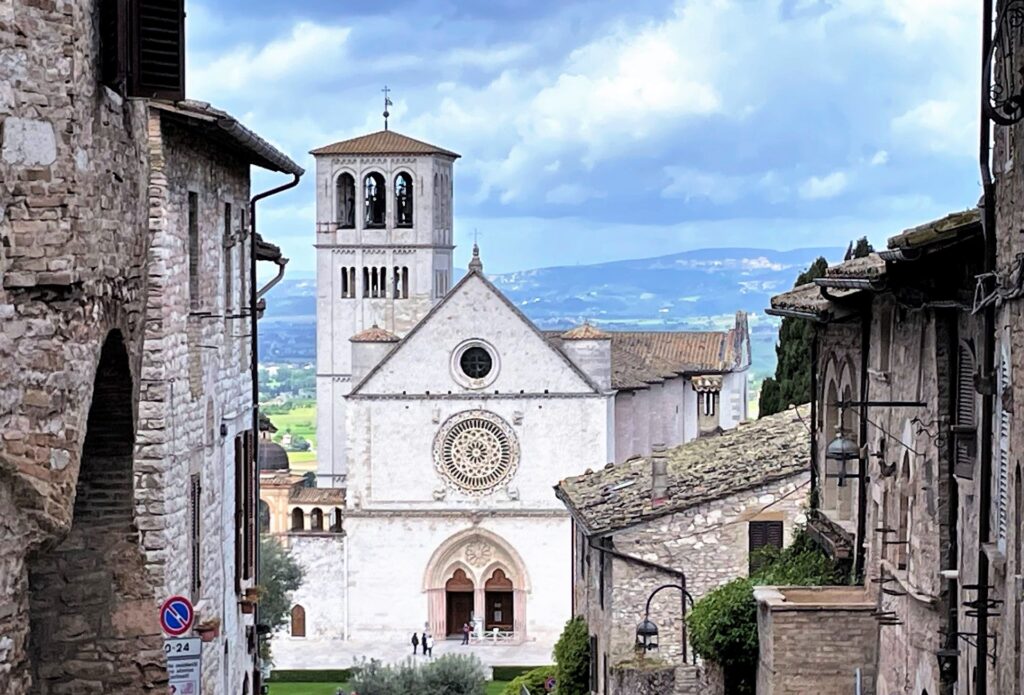
We then walked through the Via San Francesco to the Piazza del Comune, the central square with several medieval palaces, the Temple of Minerva, the Roman Forum and the Torre del Popolo (13th century).
Apart from the Duomo San Rufino, it was also a nice experience to visit the Basilica di Santa Chiara (13th century) and to enjoy the view of the surrounding countryside from Piazza Santa Chiara.
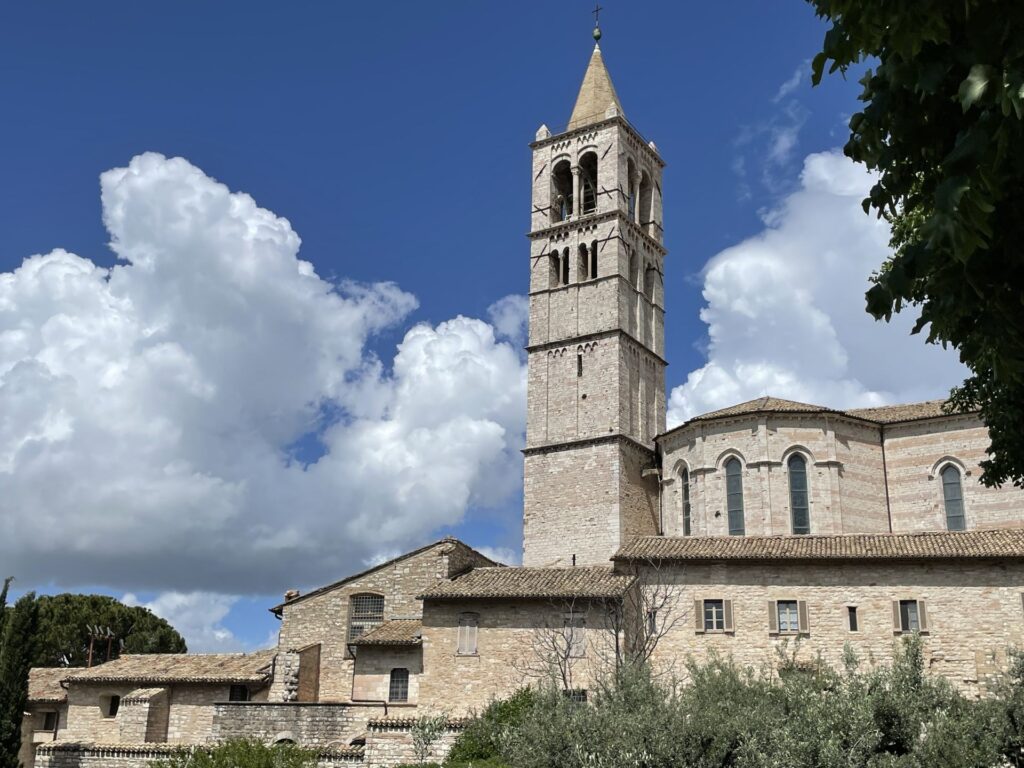
Visiting the Rocca Maggiore, a 14th-century fortress high above the town, would certainly have been attractive, but we preferred to relax on a terrace and enjoy a cup of coffee in stead of making this strenuous and steep walk uphill.
PERUGIA
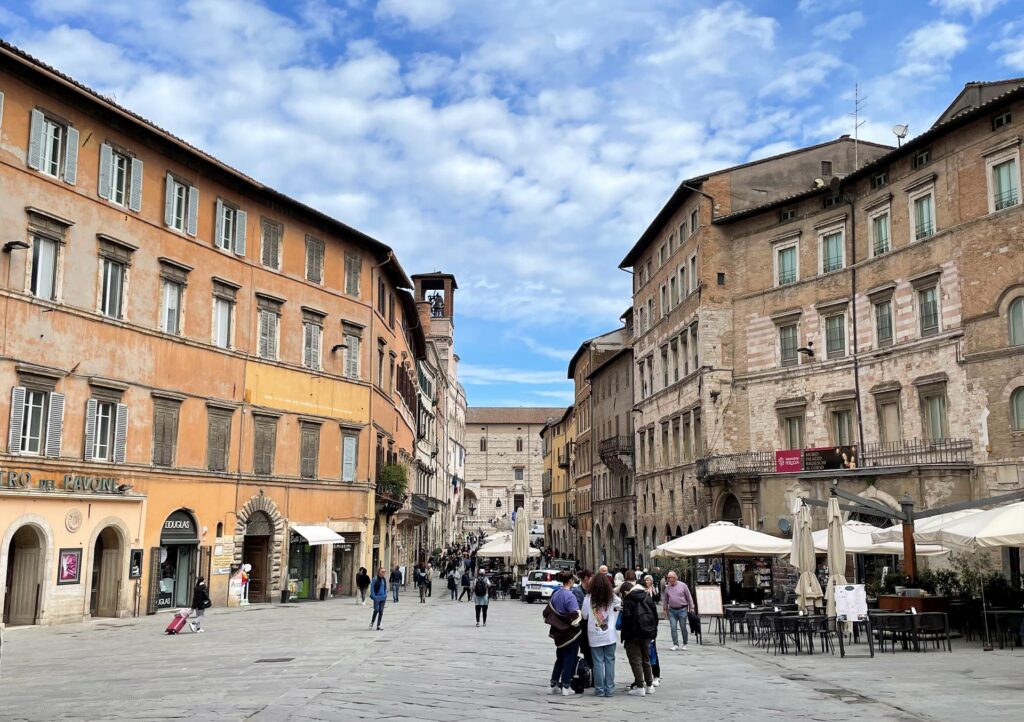
Perugia, the capital of Umbria, is famous for its history, culture and good food, especially chocolate (Perugina). Its University was founded in 1308 and is the oldest one in Italy. The ancient districts are connected at several levels by steep alleys and stairs. However, it is easy to reach the historical center: from numerous parking lots around the town, you can take the monorail (minimetro – price € 1.50, every 5 minutes) and there are also several escalators.
We parked our car at Piazza Partigiani and found our way through Rocca Paolina, a historical fortress, which was built by Pope Paul III in the 16th century. The tunnels and underground passages were connected by escalators, there were museums and shops…. A unique experience indeed!

Piazza IV Novembre, surrounded by wonderful historical buildings, appeared to be the beating heart of Perugia. We had a drink at a local bar and enjoyed the atmosphere. Many foreign students were sitting on the stairs of the Palazzo dei Priori, which houses the National Gallery of Umbria.
We admired the Fontana Maggiore, built in the 13th century and one of the most beautiful medieval fountains in Italy. The fountain was created by Nicola and Giovanni Pisano in pink and white stone and is a marvel of medieval sculpture.
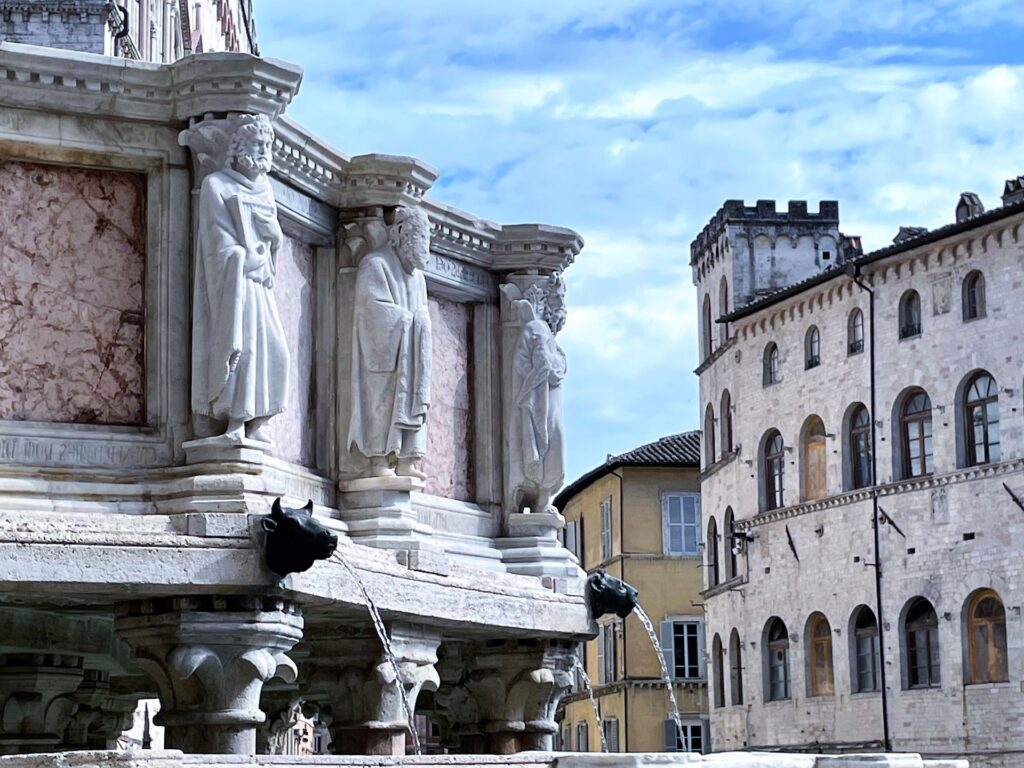
Another interesting building in the square was the Cathedral of San Lorenzo, a 14th-century Gothic church with wonderful frescoes and mosaics.
Strolling Corso Vannucci, a car-free street with many shops, bars, street musicians, etc. concluded our visit to this enjoyable city.
GUBBIO
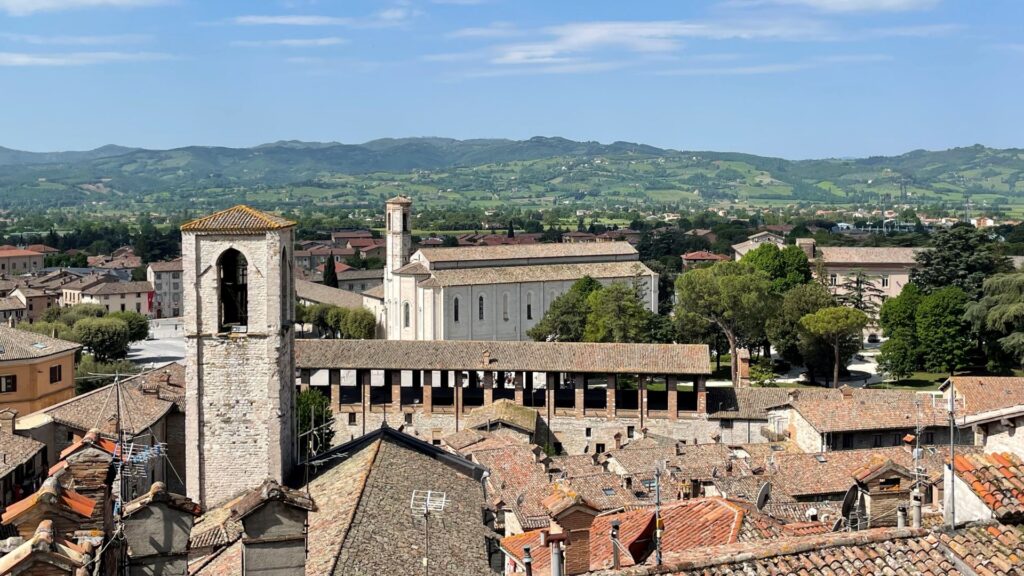
It was really a nice surprise to discover this authentic medieval town just 50 km away from Perugia! Why is this place so special? First of all, it is also called „La Citta dei Matti“, which means the town of the crazy ones. Yes, the inhabitants pride themselves on being „crazy“, as they describe themselves as being free thinkers, innovators and creative people!
We arrived in the early morning and it was easy to find a parking space close to the „centro storico“. The cobblestoned main street, Via dei Consoli, was steep and narrow. Passing beautiful medieval houses, we noticed that they were are still inhabited by the locals and we saw hardly any tourists. Children were playing in side alleys, a cat was sitting at an open window.
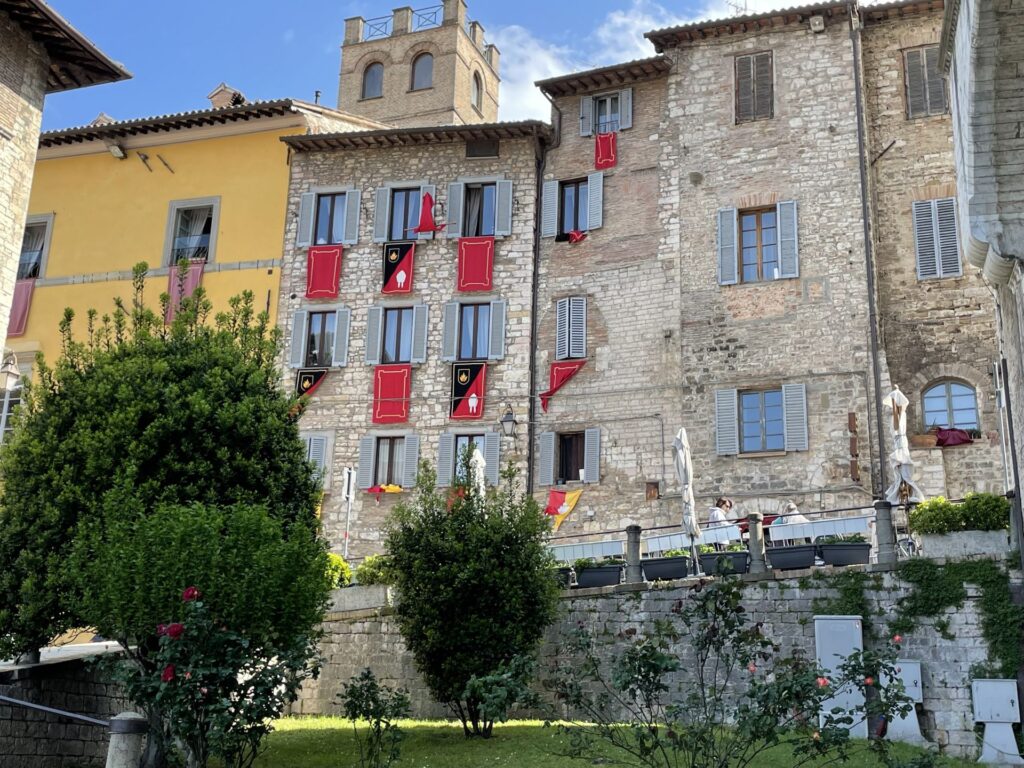
On our way uphill, we met a French backpacker, who told us more about the pilgrimage walk „Way of St. Francis“ from Florence to Rome. Why is Gubbio a part of this walk? Actually, this is the place where St. Francis tamed a ferocious wolf that was terrorizing the people of Gubbio. But one day St. Francis came along. Legend says that he approached the wolf, made the sign of the cross and blessed the animal. The wolf then laid at Francis’ feet and placed its front paw into the saint’s hand…
Finally we arrived in Piazza Grande, the „suspended square“, which was conceived as a monumental churchyard, connecting Palazzo dei Consoli with Palazzo del Podesta. The result was Gubbio’s beautiful showpiece square with panoramic views over the lower town and valley beyond. A perfect place for a break at the terrace of Cafe „Don Matteo“, where the famous Italian film series of „Don Matteo“ were produced.
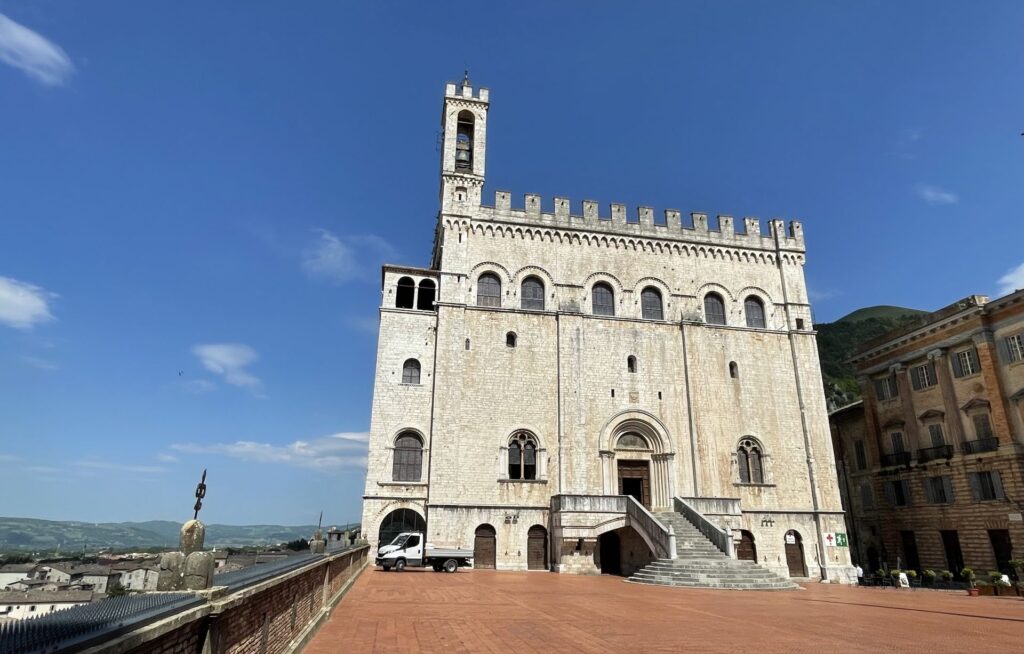
The Palazzo dei Consoli, built in the 1300s, was the building where the parliament gathered in the Middle Ages. Today it houses the Civic Museum, which offers many interesting exhibits. We particularly enjoyed the panoramic views from the open terrace.
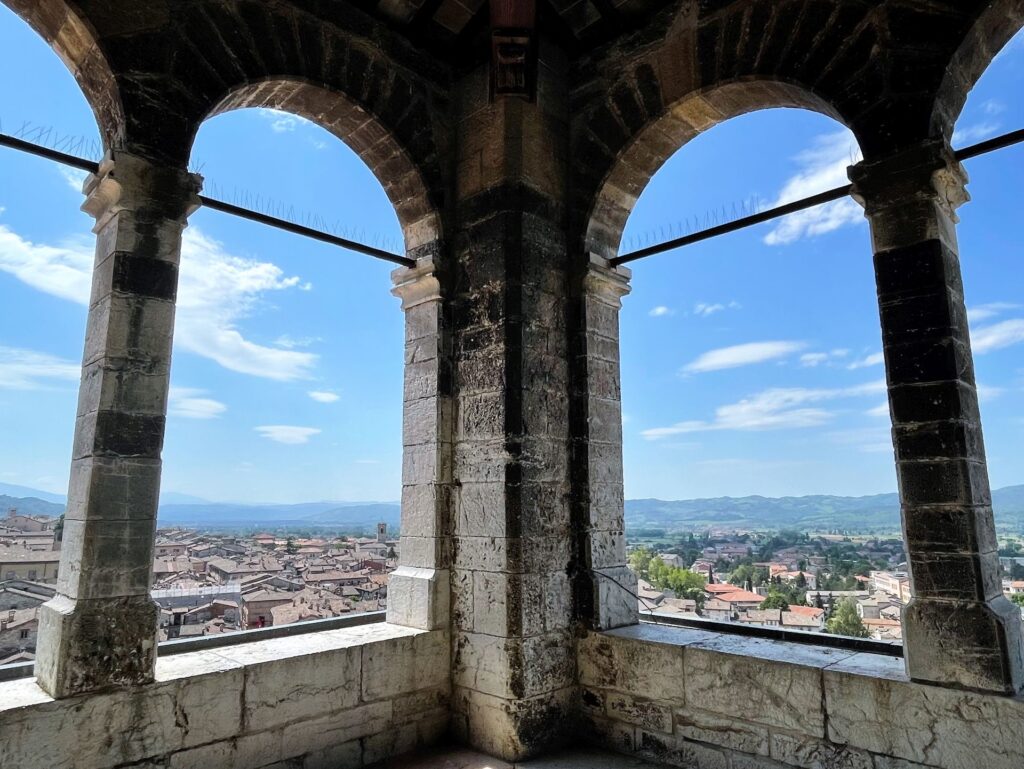
Due to our fear of heights, we didn’t take the funicular – in the form of an iron bird cage for two people – to the top of Mount Ingino and the Basilica of St. Ubaldo – maybe something for the more bravehearted!
Unfortunately, we were a few days late for Gubbio’s Festa dei Ceri (Race of the Candles) on May 15. This festival dates back to 1160, the year when local bishop Ubaldo passed away, and it is still celebrated each year. Just imagine: three teams of 12 men each race at breakneck speed through the winding lanes to the summit of Mount Ingino (4 km). Each team carries a massive wooden candle of 5 meters x 300 kg. Unbelievable! (photo: Comune di Gubbio)
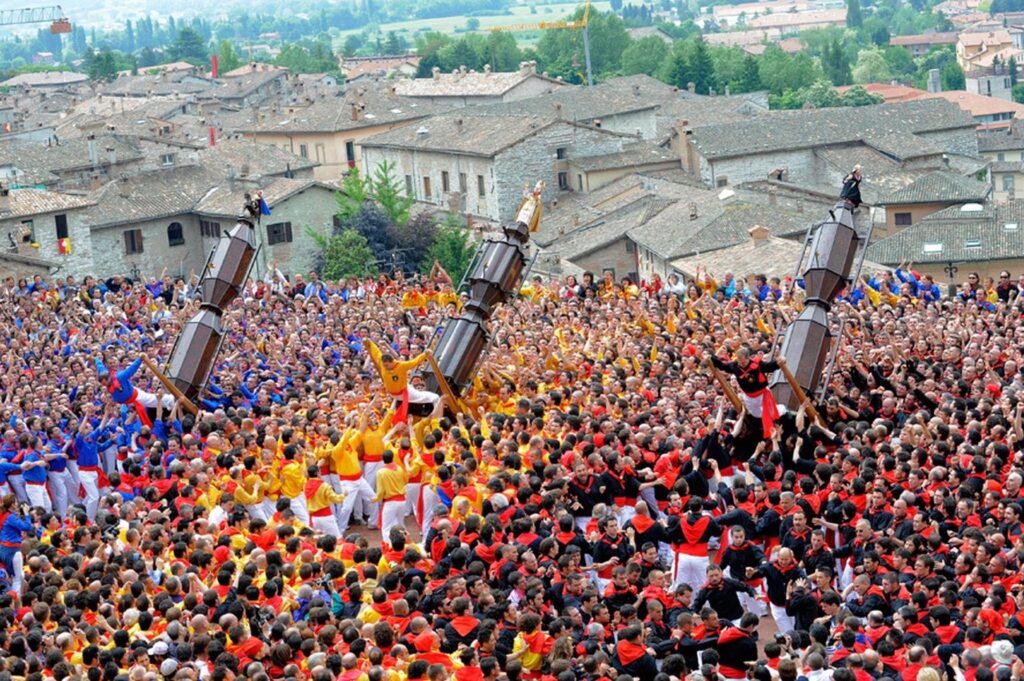
There are many other places in Umbria that are worth a visit: Orvieto, Spello, Spoleto…. Umbria is a marvellous region, a paradise for lovers of culture, history, nature and good food!
